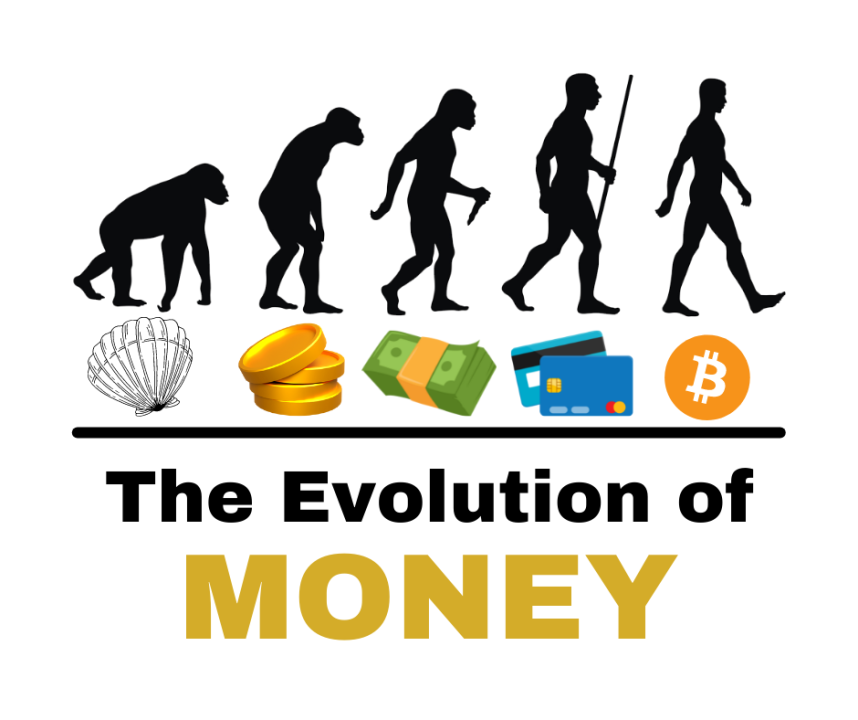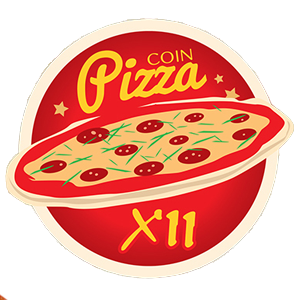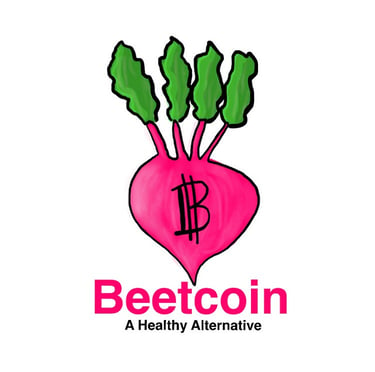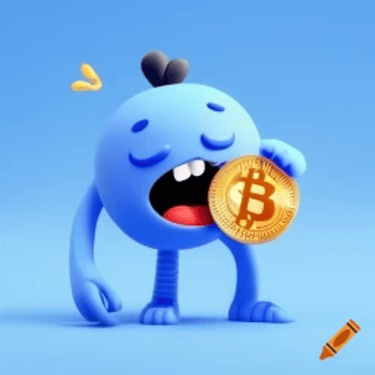The Evolution of Money: From Barter to Bitcoin
Explore the fascinating evolution of money from ancient barter systems to modern cryptocurrencies like Bitcoin. Analyze the strengths and weaknesses of various monetary systems including commodity ...
HISTORICAL
12/5/20246 min read


Today most of us use national Fiat currencies to make everyday transactions. Most people do not think how these bits of paper or plastic derive their value, just that businesses and employees are willing to accept it and therefore it becomes valuable to us as we can use it to purchase goods and services. But how did we get to these rectangles of paper and plastic and uniform metal disks from early forms of human barter and what are the pros and cons of our current system when compared to different monetary systems across the ages
The very first forms of human transactions can be traced back to 6000BC, but likely this system of trade existed since the dawn of modern humans over 100,000 years ago. It consisted of direct trade of goods for other goods. So if someone had a cow who wanted to obtain sheep, and a sheep owner wanted a cow and was willing to trade his sheep, then and only then could a transaction between the two parties occur, a price also had to be agreed upon by both parties in order for the transaction to take place. Due to this limited scope of transaction between parties, there could only be trade if you had what someone wants but they also had to have exactly what you want as well as an agreement on price. This system allowed humans to specialise within small tribal groups allowing for greater efficiency but it had its limitations.
In ancient China around 3000BC shells started to be used to settle transactions as opposed to directly in the form of barter, which was a great leap forward when compared to the prior system. Now if a party had grain to sell but wanted to purchase tea, they no longer had to try to sell grain to the tea farmer, now the grain could be sold directly to the people for shells, then the shells could be used to purchase the tea the grain farmer wanted. In addition the shells were small and compact and wealth became portable and could be stored for the future. This allowed labour specialisation, as now trade became simplified and your product now had a more stable demand and price, which leads to a greater economic output, in those times it would have been more food and shelter. The other benefit was that wealth could be stored for the future, so it encouraged people to work harder as they could purchase food in 5 years for their work now, this was a big step forward for money.
Shells were well suited to the economies of their time and that system was effective for thousands of years, the shells took time and effort to collect which gave them value. Due to counterfeit shells starting to be created after centuries of success, the value from the economy and people holding shells could now be stolen, it was the time and money invested into finding shells that gave the shells their value, so even if there was a perfect counterfeit, the fact that it could be produced for a fraction of the cost and time when compared to finding new authentic shells made it no longer a good form of money. So this is a lesson we can take from this early era, what made the money of the time valuable was its labour intensity to produce. Seems a bit contradictory to be spending economic resources producing money to have little utility outside of settling transactions but it was the very thing that allowed transactions to be settled without trust in a third party for the currency, the fact that it cost time and resources to be produced. The downfall of shell money was largely due to its ease to counterfeit although it experienced issues in the other fundamental properties of money which include durability, portability, divisibility, uniformity and acceptability was also an issue as other cultures may not recognise the shell money as a valuable thing
The next step forward in financial technology was metals pressed into circular uniform disk shapes, you may know them as coins. This was known as commodity money which is different from today's coins as these coins had value within the metals equal to the face value of the coins. The coins were made into uniform shapes and could be easily traded between parties to settle transactions, leading to more labour specialisation and greater creation of wealth for all. These early coins did face issues, mainly in the coin manufacturers diluting the money supply by diluting the gold within the coin production with lead and other inexpensive metals, counterfeiting the money supply. The coins could also be filed down slightly removing some precious gold and then still spent for the face value. This is where the ridges on our coins come from, to prevent this theft from happening. This direct peer to peer gold and precious metal system was a huge improvement over shell money and it was accepted globally so international trade could occur in a more dense form as opposed to barter
The next step forward was to ensure adequate fungibility within the money supply, but came at the cost of decentralisation. This next step forward utilised gold deposit notes so you would deposit your gold into a financial institution and then receive a slip of paper saying that you own 1oz of pure gold which could be taken out at any time. This piece of paper had the name of the financial institution or bank on it and could be transacted with other people as they had trust within the institution. This ensured fungibility as you always knew you were going to be able to walk to the bank or vault and receive 1oz of gold as the bank had a reputation to protect, so the fungibility element during this next step further eased transacting between two parties, but the issue was that now the bank or financial institution which held the gold needed to be a trusted third party for this increase in the money's fungibility, money was no longer peer to peer at this point, but economies grew rapidly due to the fungibility becoming much better. This grew to become backed by national governments making it even more fungible but centralising the system to a key point of failure which made the third party trust more centralised
In order for governments to raise money, taxes are collected from the citizens, but how can economies raise money during times of war or recession. It would be strategic if they set some aside while the economy was booming in order to take care of its citizens during the bad times but often times crises and war cannot be predicted, so during these times a new system would be created called Fiat currency in which the money’s value is derived from the supply and demand of it rather than itself being valuable as on the gold standard. In this system the value of the currency would increase and decrease based on trade and then governments could print more when they decide to in order to stimulate the economy, which can be a great thing during times of crises but the downside it is devalues the currency. This devaluing currency has some pros and cons. The benefits of having devaluing money is that there is a financial incentive to invest the money in order to retain its current day value for the future within the economy, creating booming new sectors. The downsides include inflated asset prices due to not having a form of money which retains value, so people with wealth are encouraged to purchase assets, which include housing, making the cost of living increase in the form of higher rent and house prices. Additionally in times of crises, when more money is created, each individual dollar or yen or other form of currency is worth less as there is now more money supply with the same amount of goods so while everyone may have more dollars and look richer, this does not lead to real economic growth, it is a good way to stimulate an economy though but should be done carefully as the value of the money will drop. This system was digitalised so transacting would become easier making its strengths stronger, but the weaknesses of it still remained.
The ultimate form of money is bitcoin as it selects the best elements of money from all the different forms of money across history and combines them with digital technology to create a money which has all the benefits of gold including durability, portability, divisibility, uniformity, limited supply and acceptability will increase as it becomes more widespread over time. In addition the energy and cost to create the money can now be done with electricity produced by green sources as opposed to digging up gold ore, endangering workers’ lives and polluting ground water supplies. The work can be done in a way which is clean and green but while still expending resources and energy in order to maintain the decentralisation and peer to peer element and give the money value without resorting to supply and demand as seen on Ethereum or within the current fiat system. Bitcoin is also better than gold in portability as you now can transport billions of dollars in a 12 word tune you can hum inside your head which has huge benefits for trade and for fighting authoritarian governments as there is no way in which to prove you have or do not have the digital assets. Bitcoin will become widely accepted to settle transactions globally, as it transforms gold with the digital realm to create the ultimate form of money which is unlikely to be toppled anytime soon
Get in Touch
We'd love to hear from you! Reach out for questions, feedback or other enquiries
Reach
info@bitesizedblockchain.com
Bite Sized is not affiliated with these brands in any way





Grab your daily web 3 byte
